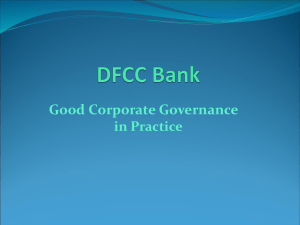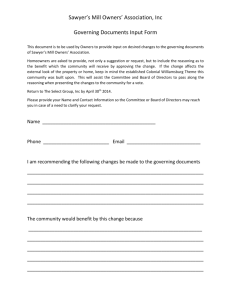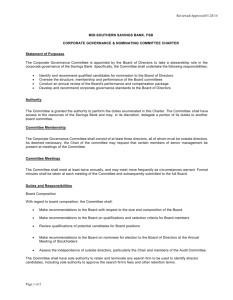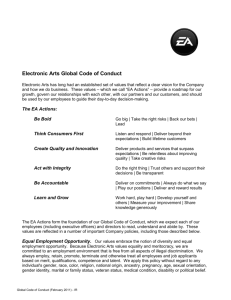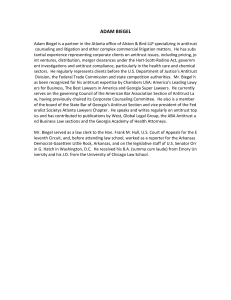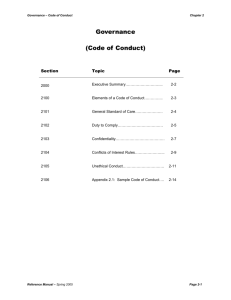Microsoft Word - Listening to the Board 12-12
advertisement
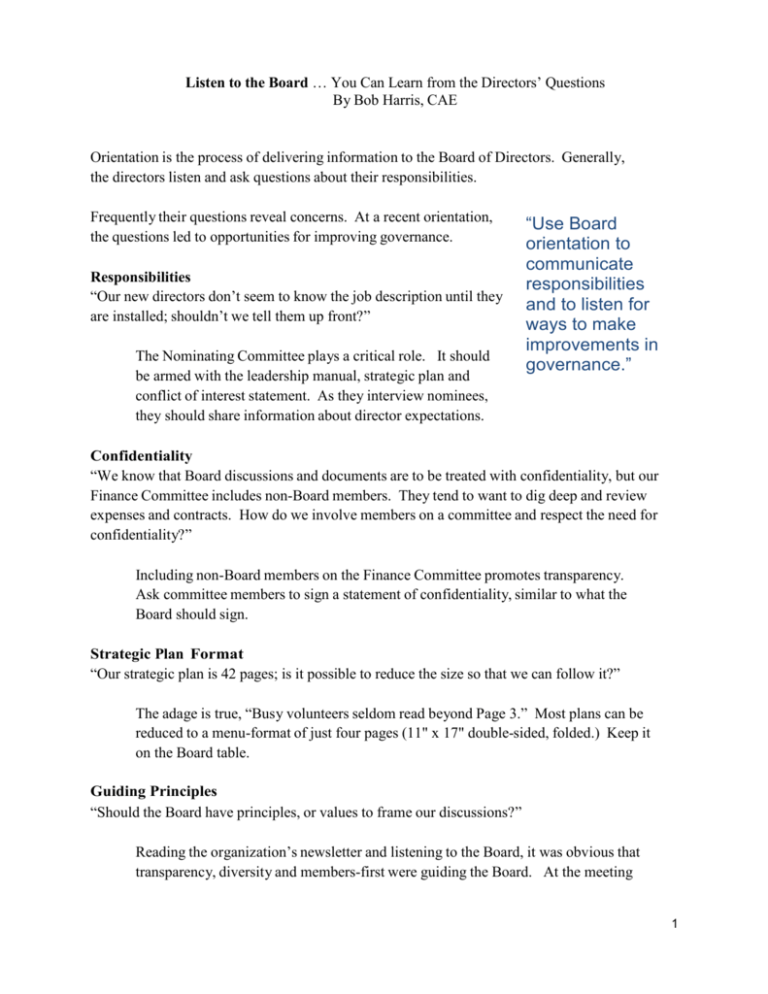
Listen to the Board … You Can Learn from the Directors’ Questions By Bob Harris, CAE Orientation is the process of delivering information to the Board of Directors. Generally, the directors listen and ask questions about their responsibilities. Frequently their questions reveal concerns. At a recent orientation, the questions led to opportunities for improving governance. Responsibilities “Our new directors don’t seem to know the job description until they are installed; shouldn’t we tell them up front?” The Nominating Committee plays a critical role. It should be armed with the leadership manual, strategic plan and conflict of interest statement. As they interview nominees, they should share information about director expectations. “Use Board orientation to communicate responsibilities and to listen for ways to make improvements in governance.” Confidentiality “We know that Board discussions and documents are to be treated with confidentiality, but our Finance Committee includes non-Board members. They tend to want to dig deep and review expenses and contracts. How do we involve members on a committee and respect the need for confidentiality?” Including non-Board members on the Finance Committee promotes transparency. Ask committee members to sign a statement of confidentiality, similar to what the Board should sign. Strategic Plan Format “Our strategic plan is 42 pages; is it possible to reduce the size so that we can follow it?” The adage is true, “Busy volunteers seldom read beyond Page 3.” Most plans can be reduced to a menu-format of just four pages (11" x 17" double-sided, folded.) Keep it on the Board table. Guiding Principles “Should the Board have principles, or values to frame our discussions?” Reading the organization’s newsletter and listening to the Board, it was obvious that transparency, diversity and members-first were guiding the Board. At the meeting 1 during lunch, a quick action team1 met and rounded out the Board’s values to include integrity and innovation. Antitrust “How do we ensure that our committees don’t violate antitrust laws?” While the Board knew about antitrust, there was no “measure in place” as the Federal Trade Commission recommends. The Board may adopt a policy2 supporting competition and avoiding antitrust violations. The antitrust avoidance statement should be a part of the leadership manual and might be included on meeting sign-in rosters. Conflict “One time we signed a conflict of interest disclosure statement, but we haven’t in years; is it important?” Since 2008, the IRS has asked exempt boards if a policy exists on disclosing conflicts and how it is monitored on a “consistent and regular basis.” Provide the conflict disclosure form at the annual orientation. Throughout the year, the Board president may start meetings posing the question, “Everyone has seen today’s agenda; is there anybody who has a conflict with any items?” Leadership Manual “As directors, we have governing documents and information to read. When do we get the information?” The information should be presented to directors in the form of a leadership notebook, memory stick, or access to a Board portal. It would be nearly impossible for directors to comply with duty of obedience without receiving the information. Meetings “We meet a lot; do we have to hold meetings?” This applies to Board and committee meetings: only meet when there is a reason. While compliance with the bylaws is essential, meeting without a purpose is a waste of volunteer and staff time. Cultural Expectations “We follow bylaws and policies, but how do we know of added duties, such as chairing committees, enrolling members, or political contributions?” Board duties outside the governing documents are “Cultural Expectations.” They develop over time and can usually be documented as a bulleted list to share in the nomination and orientation processes. 2 Form 990 “We’ve never seen Form 990, yet we are told it is public record and contains our names?” IRS Form 990 queries, “Did the organization provide a complete copy to the governing body prior to submission?” Make it standard practice to circulate the 990 to the leadership annually and discuss its contents, i.e. policies, assets, mission, etc. Transparency “We believe in member awareness of their organization. Do we give them the budget?” The question usually has an undertone of a few members asking for sensitive information. The Board wants to comply with public records, thus Form 990 is available to everyone. Beyond that, provide members with a pie chart of income and expenses so they understand finances without disclosing details revealed in the budget such as salaries, travel, contracts, etc.3 Committee Minutes “Now that the IRS promotes that committees ‘with authority’ keep minutes, the chairs are circulating their minutes and confidential information is getting out. What should we do?” When minutes are distributed by e-mail, use the PDF format (not a Word document) to protect their integrity. Regarding committee minutes, provide each committee with their own website portal, or drop box where they can post their minutes for reading by leadership only. Use orientation to communicate roles and to listen for opportunities to improve governance. # # # Note: Bob Harris, CAE, provides free governance and management resources; many examples supporting the questions in this document are available at www.nonprofitcenter.com. 1 A quick action team works faster than a task force, generally meeting once, or twice to provide an answer, or solution. 2 Policies are the documented wisdom of the Board to provide guidance for current and future Boards. 3 The principle of transparency does not imply that all documents and meetings are open to members. 3



